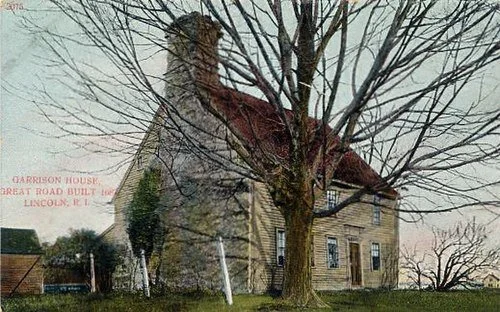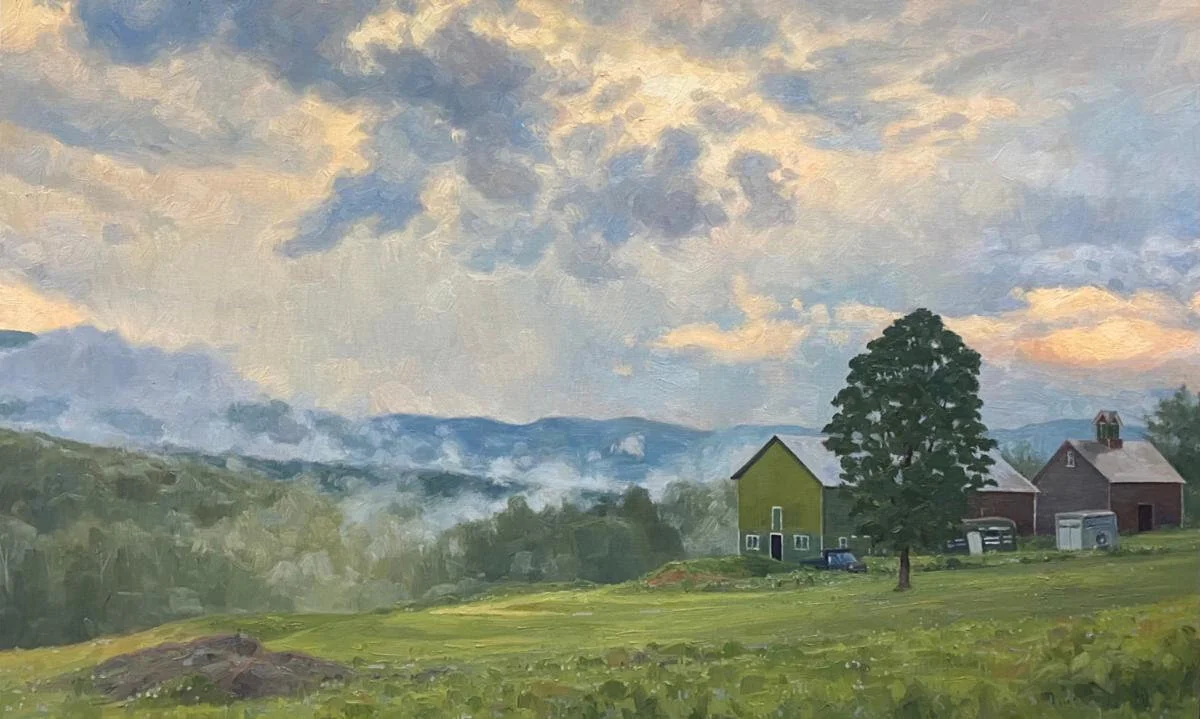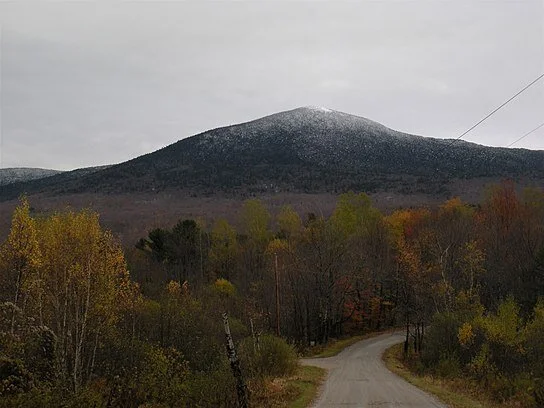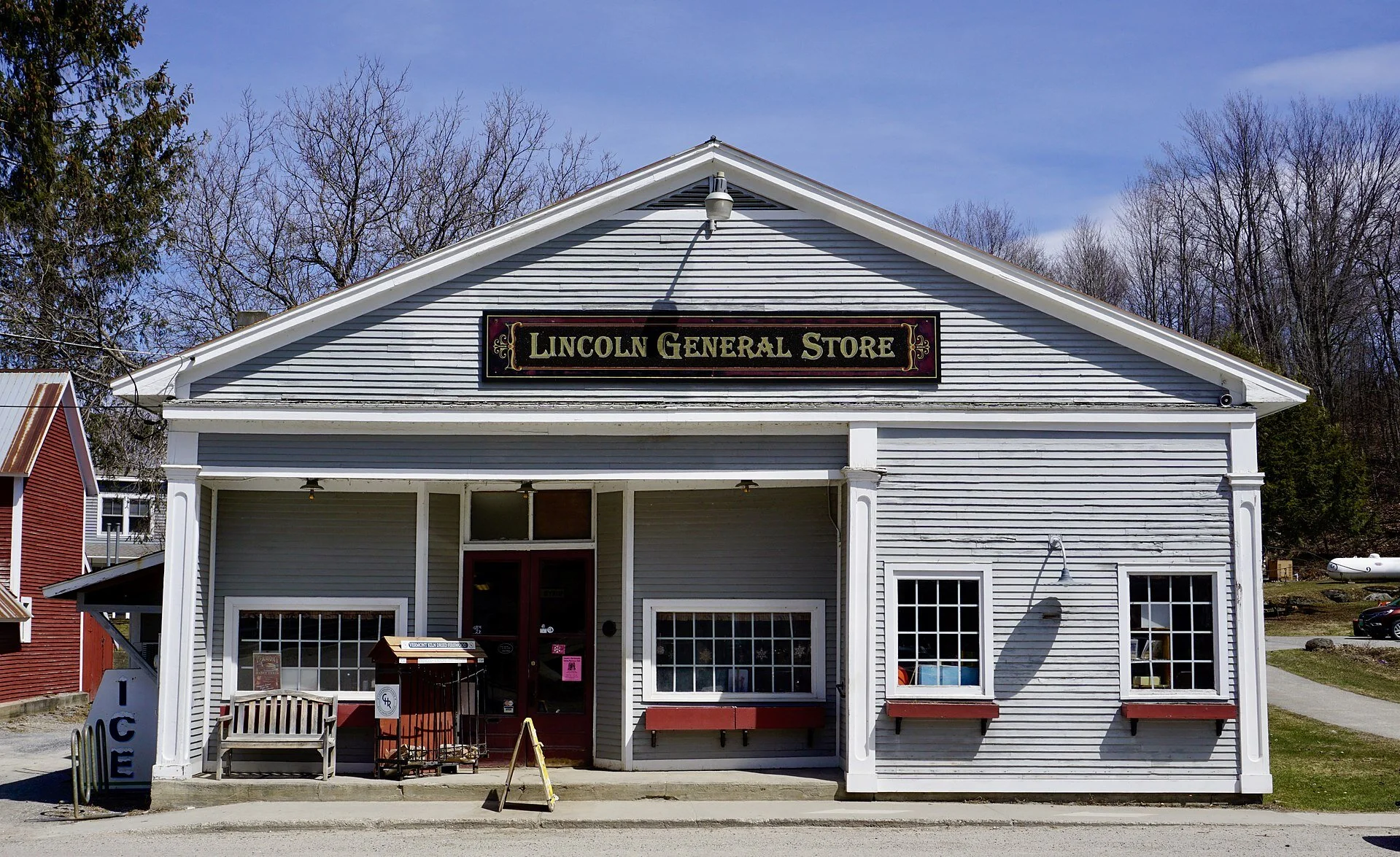Some detritus of commercial civilization
Painting by Lincoln, R.I.-based artist Peter Campbell in his show through June 24 at Gallery 175, Pawtucket, R.I.
The Eleazar Arnold House (built in 1693), in Lincoln, R.I., is a rare surviving example of a stone-ender, a once-common building type in New England featuring a massive chimney end wall. The houses stone work reflects the origins and skills of settlers who emigrated to New England from southwest England, and it’s a National Historic Landmark.
Outward and inner success
”Joy Cometh in the Morning “ (oil on linen), by Rory Jackson, in the “Plein Air 2021” show at Edgewater Gallery, Middlebury, Vt.
He says on his Web site:
“As a painter, my aim is to bring to life a presence to the viewer, a relationship between the earth and the people who hold covenant with it. Whether it is through light, reflection, movement or design, I want to bring everlasting life to a moment in time. As long as I can sense a progression in the development of my work, painting will remain a central part of my life. I think Robert Henri best stated my feeling of what it means to move forward as an artist when he said, ‘All outward success, when it has value, is but the inevitable result of an inward success of full living, full play and enjoyment of one’s faculties.’
“I spend my time between my home in Lincoln, Vt., and the beach of Cape Three Points, Ghana. While painting the landscape of Vermont, I focus on the dramatic light and space around the mountains and valleys, pivoting on my favorite Mountain of Abraham {Mt. Abraham}. In Ghana, I spend time studying seascapes, village scenes, boats, and the reflective light and movement of the sea and the life that depends on its abundance. All honest observation absorbs into my successes, a true vibrancy of life. The balance of the two places keeps my interest in subject matter fresh, while marking each year’s progress in two very different seasons.’’
Mt. Abraham from the west.
A hub of Lincoln, Vt.
=
Bauhaus meets New England
The house in the affluent Boston suburb of Lincoln designed by famed German-American Modernist architect Walter Gropius (1883-1969). He and his family lived there from 1938, after fleeing Nazi Germany. He taught in the Harvard School of Design.
The house was influential in bringing Bauhaus-inspired designs to the U.S. but Mr. Gropius dIsliked the term “International Modernism” that was applied to the house:. "I made it a point to absorb into my own conception those features of the New England architectural tradition that I found still alive and adequate."
He wrote in April 1919, in “The Bauhaus Proclamation”:
“Together let us desire, conceive, and create the new structure of the future, which will embrace architecture and sculpture and painting in one unity and which will one day rise toward heaven from the hands of a million workers like the crystal symbol of a new faith.’’






